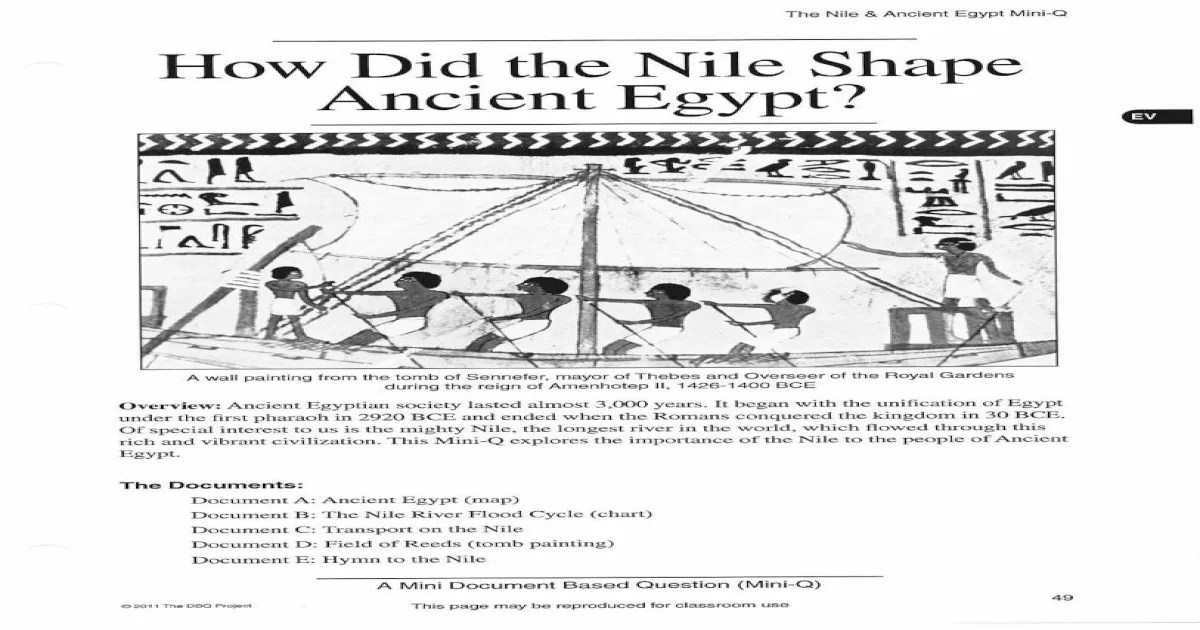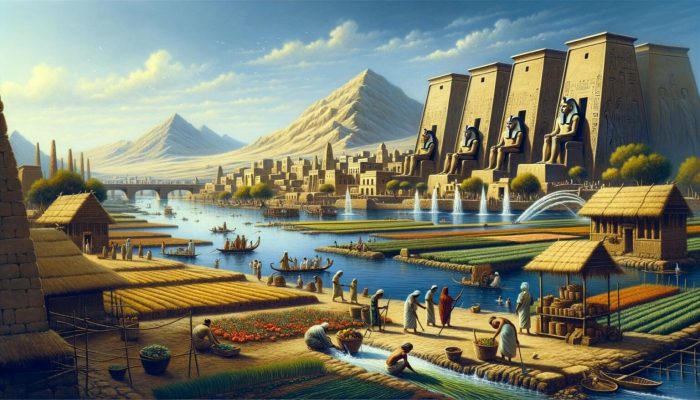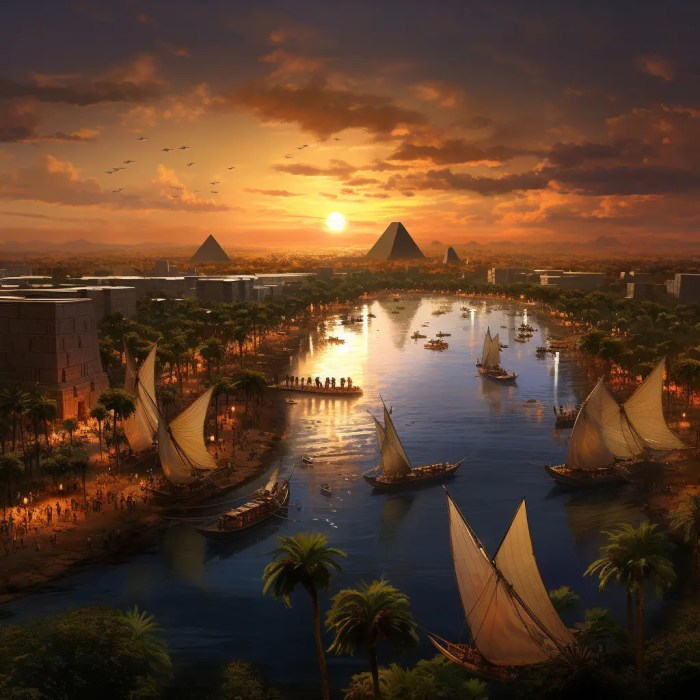How did the nile shape ancient egypt dbq – As “How the Nile Shaped Ancient Egypt” takes center stage, this opening passage beckons readers into a world crafted with historical precision, ensuring a reading experience that is both absorbing and distinctly original.
The Nile River, a life-giving force, played a pivotal role in shaping the landscape, economy, culture, and technological advancements of ancient Egypt. Its annual flooding brought fertile soil, facilitating agriculture and settlement patterns. Moreover, the river served as a vital trade route, fostering commerce within Egypt and beyond.
Geographical Impact of the Nile
The Nile River played a pivotal role in shaping the landscape of ancient Egypt. Its unique geographical features, including its annual flooding and fertile soil, significantly influenced the development of the civilization.
The Nile’s annual flooding deposited rich silt along its banks, creating a fertile floodplain ideal for agriculture. This fertile land allowed the Egyptians to cultivate crops such as wheat, barley, and flax, which formed the basis of their diet.
Settlement Patterns
The Nile’s flooding also influenced settlement patterns. The Egyptians built their cities and villages on higher ground to avoid flooding, but close enough to the river to take advantage of its water and fertile soil.
The river’s predictable flooding cycle allowed the Egyptians to develop advanced irrigation systems, such as canals and dikes, to control the flow of water and maximize agricultural productivity.
Economic Significance of the Nile: How Did The Nile Shape Ancient Egypt Dbq

The Nile River was a vital economic artery for ancient Egypt. It facilitated trade and commerce both within the region and with neighboring countries.
Trade and Commerce
The Nile provided a convenient and efficient means of transporting goods. Egyptians used boats to transport agricultural products, minerals, and manufactured goods up and down the river, as well as to trade with neighboring regions such as Nubia, the Levant, and Mesopotamia.
Industries
The Nile also supported the development of various industries. The Egyptians used the river for fishing, shipbuilding, and papyrus production. The fertile soil along the river’s banks allowed for the cultivation of papyrus reeds, which were used to make paper and other products.
Cultural and Religious Importance of the Nile

The Nile River held immense cultural and religious significance for the ancient Egyptians. It was considered a sacred body of water associated with deities, rituals, and the afterlife.
Deities and Rituals
The Egyptians believed that the Nile was created by the god Hapi, who was associated with fertility and abundance. The river was also associated with other deities, such as Osiris, Isis, and Horus.
The Egyptians performed various rituals along the Nile, including purification ceremonies and offerings to the gods. The river was also used for religious festivals and processions.
The Afterlife, How did the nile shape ancient egypt dbq
The Nile played a significant role in the Egyptian concept of the afterlife. The Egyptians believed that the souls of the dead traveled across the Nile to the Field of Reeds, a paradise where they could continue to live and prosper.
Nile-Based Innovations and Technology

The Nile River enabled the development of numerous technological advancements in ancient Egypt. These advancements included irrigation systems, water storage methods, and transportation innovations.
Irrigation Systems
The Egyptians developed advanced irrigation systems to control the flow of water from the Nile. These systems included canals, dikes, and reservoirs, which allowed them to expand their agricultural production and increase their food supply.
Water Storage Methods
The Egyptians also developed methods to store water during the dry season. They built dams and reservoirs to capture and store water from the Nile’s annual flooding. This stored water could then be used for irrigation and other purposes during the dry months.
Transportation Innovations
The Nile provided a vital means of transportation for the Egyptians. They developed boats and ships of various sizes and designs, which allowed them to travel up and down the river and to trade with neighboring regions.
Environmental Impact of the Nile

The Nile River had both positive and negative environmental impacts on ancient Egypt. While it provided fertile soil and a reliable water source, it also posed challenges such as flooding and disease outbreaks.
Fertile Soil
The Nile’s annual flooding deposited rich silt along its banks, creating fertile soil that was ideal for agriculture. This fertile land allowed the Egyptians to cultivate crops and support a large population.
Disease Outbreaks
However, the Nile’s flooding could also lead to disease outbreaks. The stagnant water left behind by the floods could become breeding grounds for mosquitoes, which transmitted diseases such as malaria and schistosomiasis.
FAQ Explained
How did the Nile River influence agriculture in ancient Egypt?
The annual flooding of the Nile deposited fertile soil along its banks, making agriculture possible in an otherwise arid region.
What role did the Nile play in trade and commerce?
The Nile served as a vital trade route, connecting Egypt to neighboring regions and facilitating the exchange of goods.
How was the Nile River important to the religious beliefs of ancient Egyptians?
The Nile was associated with deities such as Hapi, the god of the Nile, and was seen as a symbol of life and rebirth.